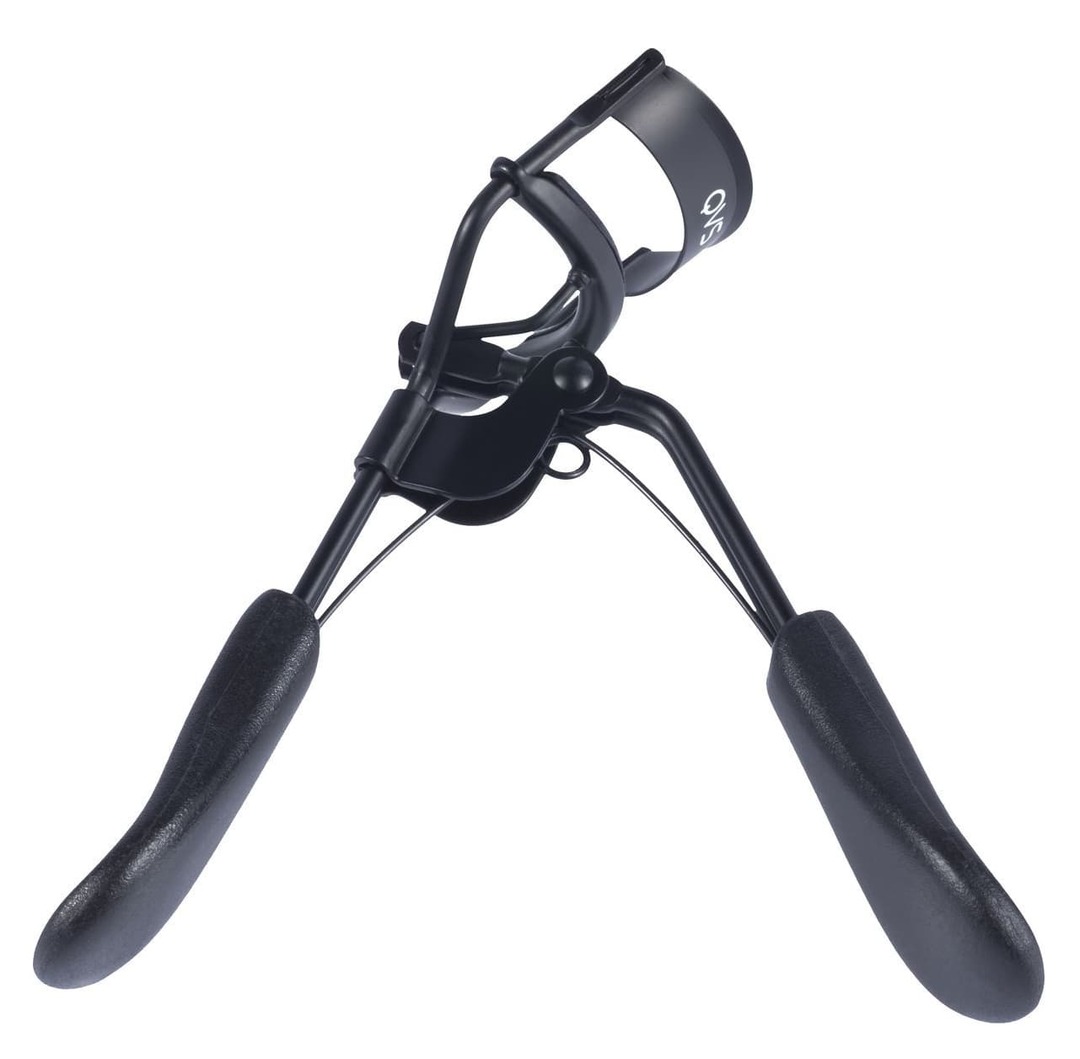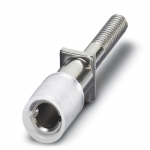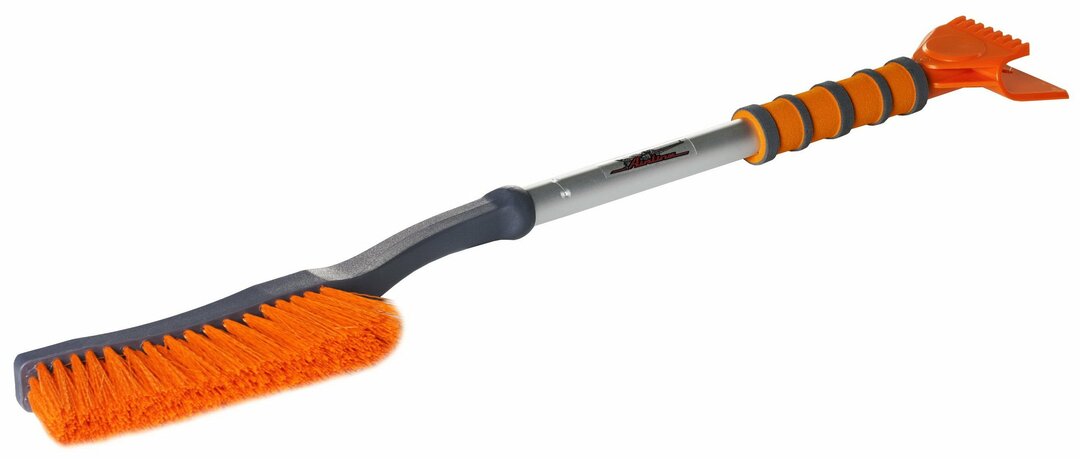This question is very relevant when you need to repair or replace the old bathroom. But not so long ago it was a great success to get any, if only a new bath. The modern range is so diverse that the buyer is often lost, not knowing what to stop the attention on. Which of the materials is more reliable and durable? What form will give not only the beauty of the room, but also comfort in use? We are sorting out together.
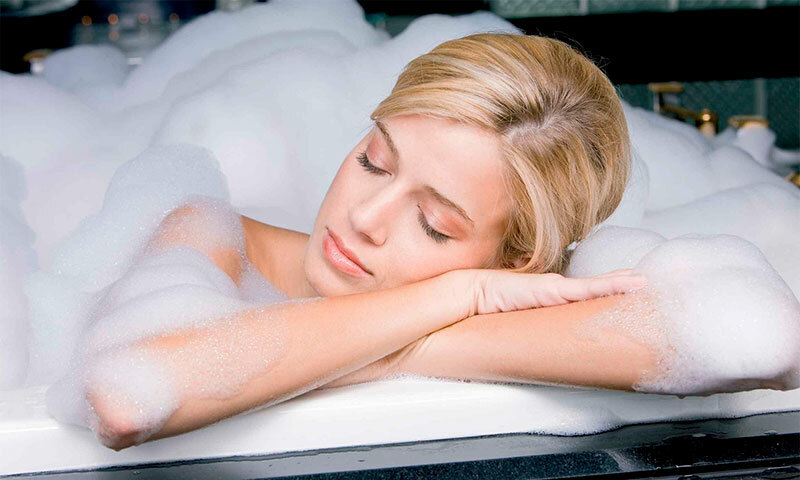
Contents:
- Best bath manufacturers
- Bath types: material and shape
- Bath selection parameters
- Which bathtub is best for choosing
- How much is the bath
The best bath manufacturers - which firm to choose
The brand name is not the last criterion when choosing, because illiterate technologies canto "nullify" the positive properties of a certain bath. The buyer does not always have the opportunity to dive into the study of all proposed manufacturers, and we tried to reduce this information to the most popular representatives of the segment.
In the Russian market of sanitary equipment today such European brands are leading:
1. Cersanit
2. Ravak
3. Vagnerplast
4. Pool Spa
5. Kolo
Acrylic baths of these manufacturers have proved themselves on the best side. Although, domestic production does not lag behind, offering alternative high-end products: the Russian company Aquanet, the trade brand 1 MarKa and others.
Cast iron baths, which always belonged to the premium class, are produced by a few manufacturers. Among the domestic - this Kirov plant of cast-iron products, an enterprise that guarantees its products a service life of more than 25 years. Fine products are offered by the Spanish brand Roca( they produce cast iron and steel baths).
Do you prefer German perfection? Then - steel accessories from Smavit Kaldewei. More and more Chinese products are appearing on our market. To popular it is necessary to carry the company Goldman, offering the budgetary goods of quite good quality.
Kinds of baths: material and form
Special attention deserves such a moment as the shape of the bath. Variety can complicate the task, but it's not worth losing.
Make your choice based on room dimensions, interior solutions and, of course, considering your own taste:
1. Rectangular - ergonomic and very comfortable. Remains the most popular among buyers.
2. Corner - roomy and looks great in the room.
3. Oval is a real bathroom decoration. Can be installed anywhere.
4. Round - requires "space".It looks very good in the center of the room.
Modern manufacture pleases with a variety of materials, but we will begin our excursion from the most bought.
Cast iron bath
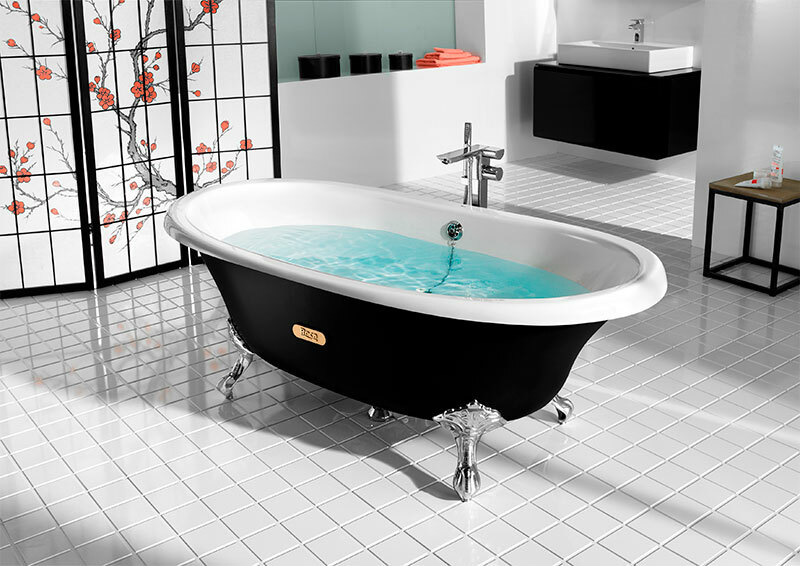
Cast iron is considered a classic, and it's fair. This bath is durable, it preserves the heat remarkably. Heavy weight( ranging from 100 to 130 kg) is considered a big "minus" and a significant "plus" of the cast-iron bath. From the inside, the bath is covered with several layers of enamel, ensuring the safety of the water temperature( cooling takes a very long time, more than an hour and a half the water remains hot).Therefore, when buying a cast-iron bath, do not be too lazy to inspect it for possible chipping.
Advantages:
- Durable coating, resistant to temperature changes.
- Resistance to chemicals.
- Simple surface care.
- Aesthetic appearance( smooth, shiny surface).
- Durability( with gentle handling - more than 50 years).
Disadvantages:
- Big weight( difficulties in installation and delivery).
- Risk of chipped enamel when heavy objects fall.
Steel baths

These baths are produced by stamping method from stainless steel. It has a small weight, which is very convenient in terms of delivery. But the installation will require a reliable fixation, because light weight provides it with instability. Inside it is covered with enamel. The water in it cools down quickly and when filled, creates a lot of noise, as the soundproofing capabilities of the steel bath are low. The last "minus" is easily eliminated by filling the side parts of the bath with mounting foam. For the same purpose it is possible to use noise-absorbing gaskets made of rubber.
Advantages:
- Light weight and large size range.
- Simple installation and easy transportation.
- Rapidly warming up.
- Lifetime from 15 to 30 years( depending on the enamel coating).
Disadvantages:
- Requires thorough fixation during installation, as it is unstable.
- When filling, it makes a lot of noise.
- Rapid cooling of water.
- See also: The best steel baths
Acrylic baths

The demand for acrylic baths among modern buyers is growing rapidly. They combined all the best characteristics of cast iron and steel models. They are made of special plastic, reinforced with fiberglass or metal mesh. Acrylic made it possible to produce plumbing of different shapes and shades. Such a bath weighs a little, it is easy to assemble, and it perfectly retains heat. But the bath does not withstand temperatures over 160 degrees. Boiling water can lead to deformation.
Advantages:
- Light weight( 15-35 kg).
- Pleasant surface, free from slipping.
- Heats very quickly and for a long time keeps heat.
- Operational period from 10 to 15 years.
Disadvantages:
- Not resistant to abrasive cleaning.
- Does not withstand high temperatures.
- See also: Best acrylic bathtubs
Kvaril baths
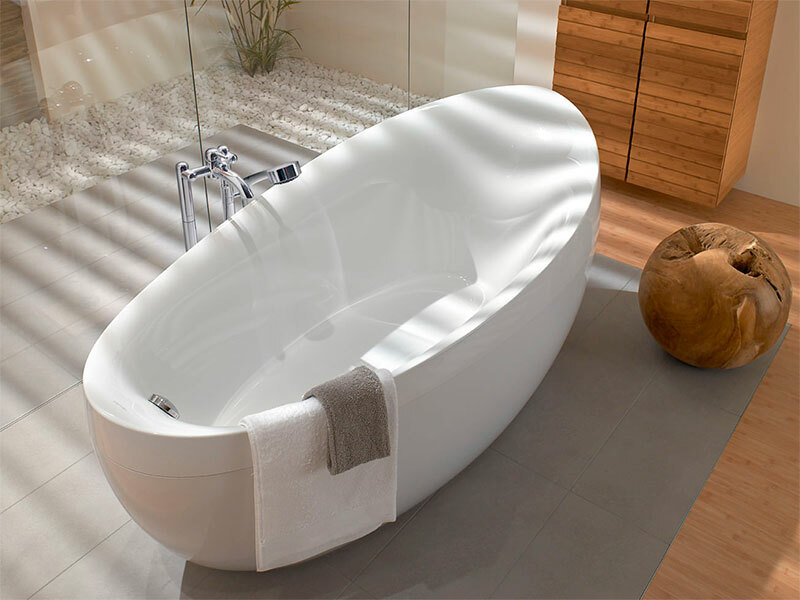
A new name in the sanitary ware market is a quarrel bath. This is a kind of mix of acrylic and cast iron baths, if we talk about the benefits. Material of manufacture: acryl and quartz. The latter gives the product a high strength, and acrylic allows for color diversity and is responsible for the elasticity.
Advantages:
- Excellent external data.
- Relatively light weight.
- Resistant to heat and mechanical damage.
- Elementary care and long service life.
- High soundproofing properties( recruiting water does not create noise).
- Long cooling down.
Disadvantages:
- High price.
- Small selection of shapes.
- Continuous operation at high temperatures can lead to deformation of the bath.
Marble baths
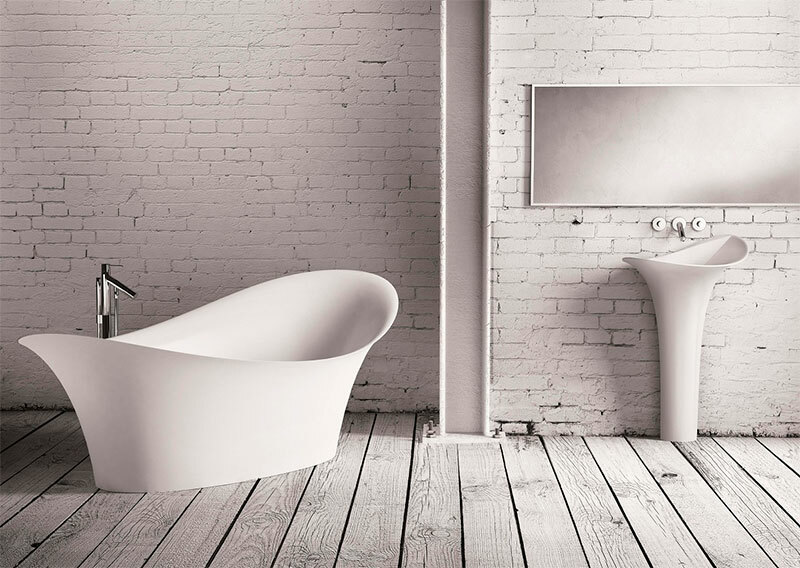
This type of equipment belongs to the elite. Of course, the interior should be appropriate, and the room - spacious. They have the properties of natural stone, as they are made of marble chips with the addition of polyester resin.
Advantages:
- High strength.
- The ability to keep water temperature for a very long time.
- Absorbs noise.
- Large selection of shades.
Disadvantages:
- Has high cost.
- Heavy, which makes transportation and installation difficult.
- Needs care( detergents leave marks).
Wooden baths
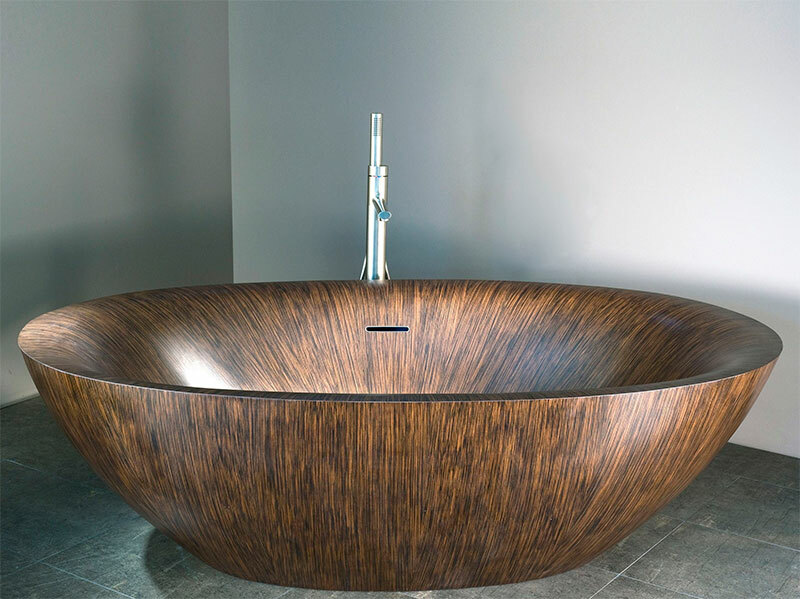
It's now many people are surprised to hear about a wooden bath. But our ancestors for bathing used this natural material always: troughs, tubs, barrels, etc.
Advantages:
- Ecological and curative effect on the body.
- Wood miraculously holds heat and is not afraid of long exposure to water.
Disadvantages:
- There is a risk that the tree may begin to crack. To avoid this, wet it often with water.
- Not suitable for prolonged water procedures and washing.
- Has a high price.
Glass baths

This beauty is often not found, because many frighten her fragility. This is an erroneous opinion, because glass baths are made of double-ply glass, which has such strength that it is impossible to break it.
Advantages:
- High aesthetics.
- Large selection of shapes, sizes and colors.
- The ability to save space visually.
- Keeps the water temperature for a long time.
- Long service life.
Disadvantages:
- Difficult care( can remain stains).
- High cost.
Earthenware baths
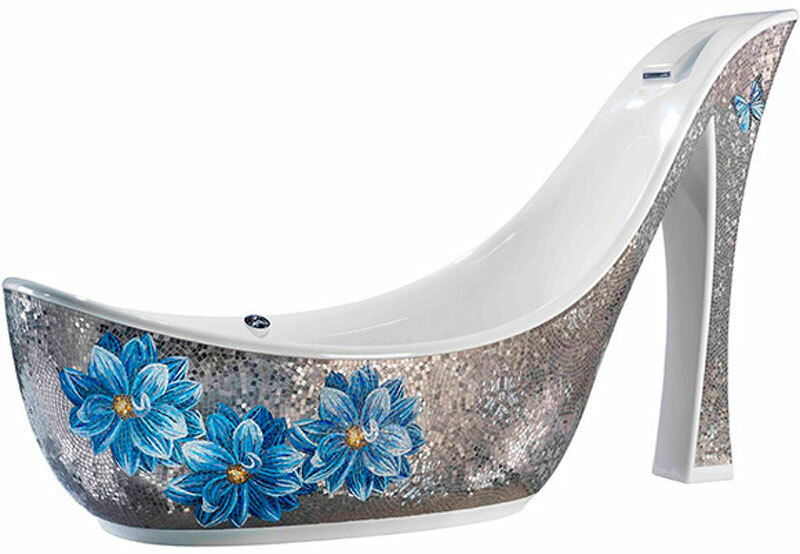
It's impossible to say that this material for bathrooms enjoys incredible demand. Although faience baths were very relevant in the 18th century, with the advent of cast-iron models, they receded into the background. Today, interest in beautiful earthenware is celebrated again. The newest technologies made it possible to minimize the disadvantages of the faience baths.
Advantages:
- Low thermal conductivity allows long heat retention.
- Comfort when taking a bath provides a smooth inner surface.
- Long service life( subject to gentle handling).
- Highly aesthetic appearance.
Disadvantages:
- High price.
- Friability of the material.
The faience model perfectly fits into a spacious bathroom, becoming a real decoration for it. For small rooms, this option is hardly suitable.
Bath selection parameters

Before purchasing such an important accessory as a bath, it is imperative to measure the room where it will be installed. Be sure to evaluate the technical capabilities of connecting communications. It is necessary to think about the characteristics that are important for your bath: the ability to preserve heat, the quality of materials, sound insulation, life, cost.
Modern models can be equipped with additional devices for massage, head restraints, handles, etc.
The main criteria to look at first: convenient size and shape, resistance to mechanical damage, safety.
We tried to collect only useful advices to help you make a choice:
1. If the bathtub is not equipped with a siphon, then buy it simultaneously with the desired model to ensure their compatibility.
2. Choose a bath that has an anti-slip coating of the bottom.
3. Thoroughly inspect the entire surface of the bath to avoid cracks or chips. Enamel should be uniform, without streaks.
4. When buying an acrylic bath, remember that the thickness of acrylic can not exceed 5 mm. If advertising promises 6 mm, it's more like a plastic bath with a millimeter acrylic layer.
5. Choose the model according to the style of the bathroom. Very sensible immediately buy mixers.
6. Give preference to proven manufacturers that have proven themselves in the market.
Which bath to choose
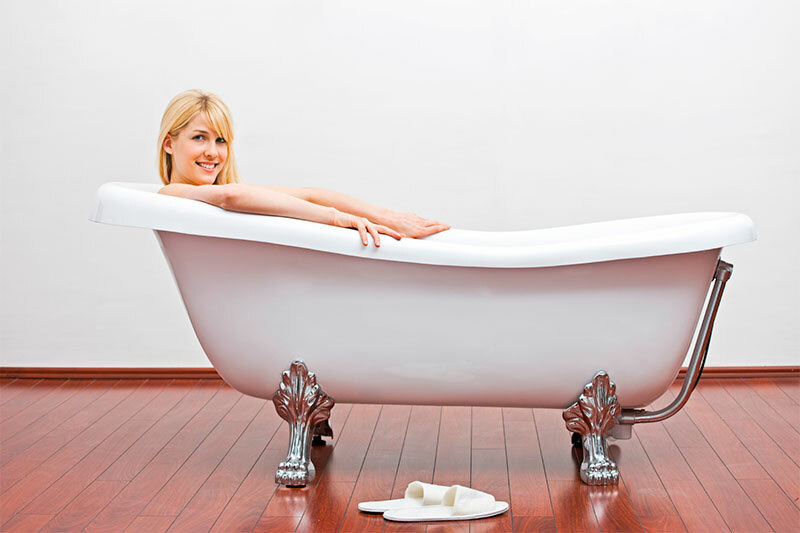
We hope that with the choice of material you will not have any difficulties. But on the dimensions it is necessary to stop the attention! If your bathroom can not boast of size, then you need to clearly determine using the simple formula:
Ideal bath length = the distance between the opposite walls( +/- 1-2 cm).
Take into account such an item as the growth potential to use the bathroom. The length of the standard bath varies from 150 to 180 cm, width is usually around 70-85 cm. If a person can be half-lazhed in it without bending his knees, then the product is chosen correctly( the distance to the rims should be at least five centimeters).Normal depth is from 50 to 60 cm.
How much is the bath
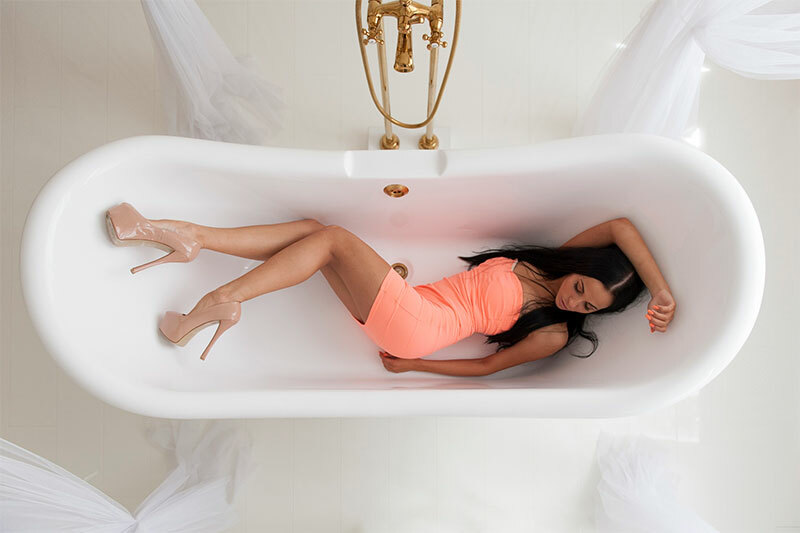
Briefly about the most popular:
1. The cast iron enamel bath will cost from 250 to 500 cu if you are considering a variant from the European brand. Bath from the Russian brand will be cheaper( the price range starts from 1500 rubles).
2. Steel will cost much less, since it has more "minuses" and its service life is half that. You can buy a steel bath, spending from 60 to 250 dollars.
3. The average cost of an acrylic model is 250 cu. But its price can reach $ 700, if the manufacturer provided it with additional functionality.
In conclusion, we recall that in trying to buy a "mind-blowing" bath, do not forget about safety and comfort.

